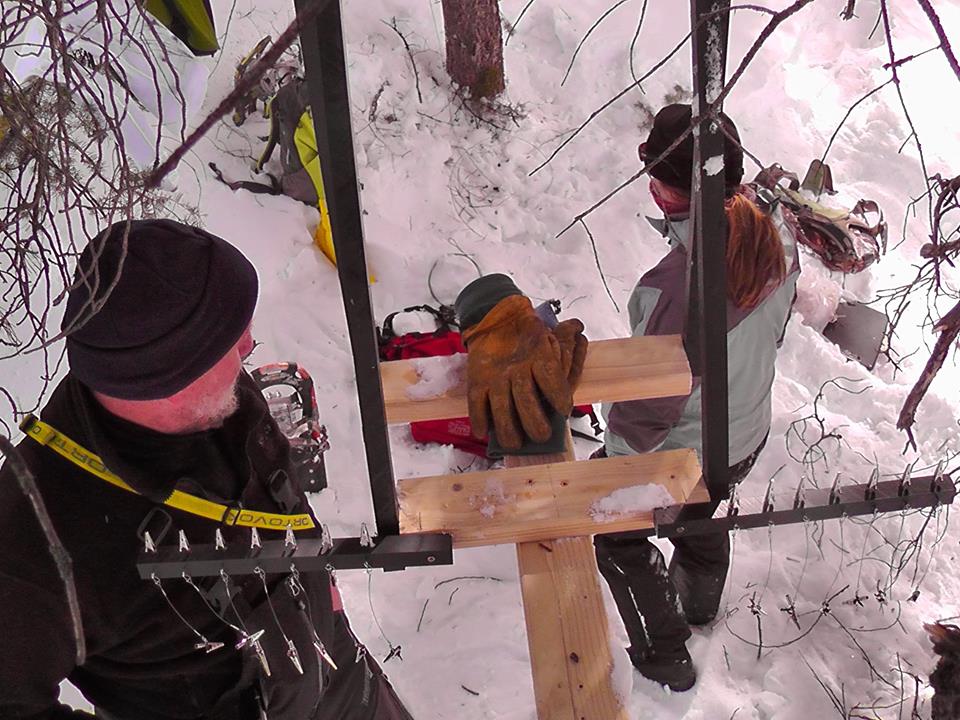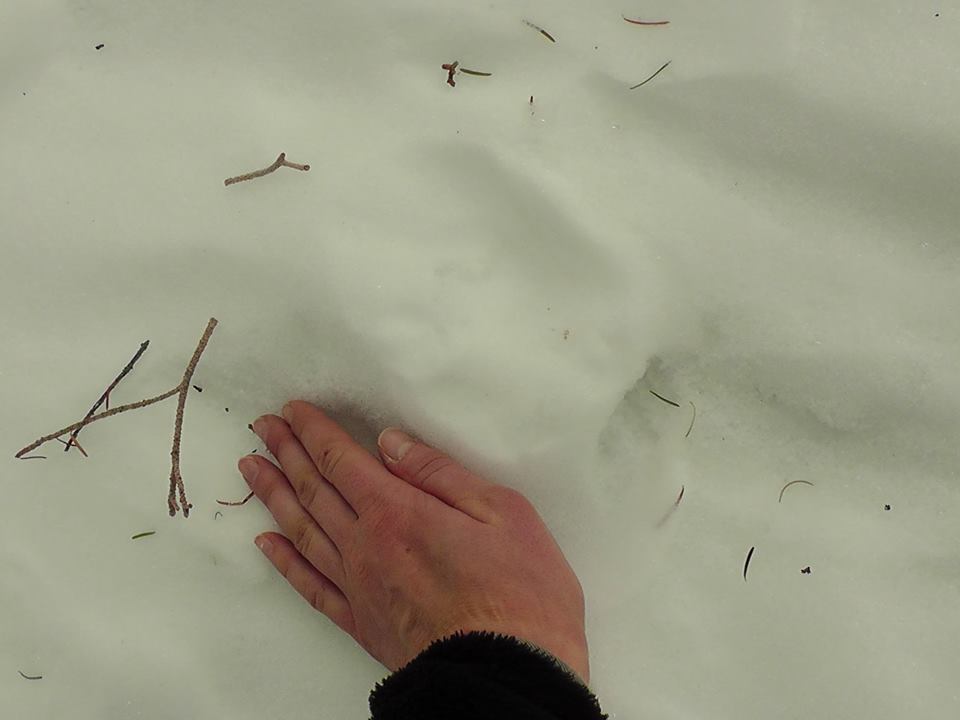Chasing Wolverines
In Winter 2011, I spent a season chasing wolverines within a small team of field researchers. I went along because I wanted to know what a wolverine was.
Wildlife television specials revealed wolverine super-factoids: a wolverine was a musky, crampon-footed beast that rummaged between mountain ranges. They could smell out frozen carcasses buried up to 20 feet in snowpack. They were welterweight carnivores that could bring down a live elk and walk from Grand Teton to Rocky Mountain National Park in a very short time. Wolverines sounded scrappy, tough.
In Native American folklore, they were shadow animals leaving tracks that vanished into snowdrifts along raw mountain ridges, into a place between the wind and mountain. They existed between worlds, dipping into the spirit land and returning here, to the mountains, to sniff around rotting rumen piles. Wolverines sounded like ghosts.
I asked cowboys at the Silver Dollar in Ennis about mountain devils. The guys lined along the bar had more wolverine stories than I will ever have. One old timer described watching a pair: “I’ve only seen ‘em once. In 1975, way up high, when we rode into Bear Creek to hunt, I saw two playing together. They were scrambling up a scree field and sliding down it on their backs and bellies, having a grand old time, doing it over and over again. We sat and watched them until they got tired of it and ran off. That’s the last I saw a wolverine.”
If this guy spent decades on horseback in the mountains and stumbled upon wolverines on this one occasion in 1975, what were my chances of seeing just one, even while trying to camera trap them day after day? The wolverine sounded extinct.
I graduated to the hard stuff written by a small handful of researchers. Sorting through scientific journals and the Federal Register, it became apparent that some of the challenges to conserving the species were local in origin, such as impacts from winter backcountry recreation. But some issues spanned far beyond state lines and time zones—habitat connectivity, the need for landscape-level collaboration across diverse federal and state agencies. And climate change.
Wolverine dens are located in high-elevation basins, often in talus fields or under avalanche debris piles. They bore through the snow, carving out tunnels and chambers. These deep caverns provide a place to give birth in February and then rear cubs. With the ability to smell out a meal miles away, wolverines patrol avalanche slides for buried victims and excavate the carcasses of mountain goats or big horn sheep to feast upon. Leftovers are carried back to the den site and cached nearby in snow, providing sustenance for females while caring for young. With the loss of snowpack, wolverines lose this natural refrigeration system.
Wolverine population numbers have rebounded in the Lower 48 contiguous United States since hitting all-time lows in the 1930s, but the species is still a vulnerable player in a complex sociological-biological equation. Add mountainside cul-de-sac developments, golf courses and other human structures to the coefficients of climate change, natural habitat availability and animal behavior, and it seems a miracle is required for the wolverine to continue on its upward trajectory. From the story of science, the case of the wolverine sounded quantifiable and urgent.
The wolverine had been seductively wrapped in all manner of packaging by indigenous and digital storytellers, as well as scientists, advocates and others who sought to place their stamp on the species. No matter their differences, all sources seemed to agree on one solid truth: the wolverine was an animal trapped in limbo. And the wolverine was about the wildest, untamable thing you could find in the United States. They reflected one of many things that made us uniquely American.
Our team spent several months setting camera traps at 8,000 feet of elevation or higher, often in temperatures of ten to twenty below. Our study area stretched from Henry’s Lake, Idaho to north of Big Sky Ski Resort. We captured images of wolverines at just about every camera trap site. But we never saw one in the flesh. The closest we got was finding a set of hour-old tracks.I hope our climate and wildlife scientists find institutions and individuals to support their curious minds. I hope they can continue to work within our borders.
And as for wolverines? Before we can thoroughly quantify and catalogue them, before we mold them into a gawk-worthy product for our television screens, before we uphold them as poster children for never-ending lawsuits, I hope they run at the sound of our approach. I hope they vanish into hapless drifts upon catching our scent.
Read about Sarah Grigg:
For the last 15 years, Sarah’s communicated across audiences ranging from elk hunters in remote backcountry camps to National Park officials to CEOs of mainstream corporate America. Prior to becoming an independent writer and editor, she researched grizzlies and wolverines in the field, managed ranches and lodges, and planned events large and small.
Today, she’s based in Bozeman, Montana and takes on anything from covering journalistic assignments around the globe to scripting for outdoor and travel films to creating award-winning branded content.
Thank you Sarah!
Read more of Sarah’s writing:
www.sarah-grigg.com






